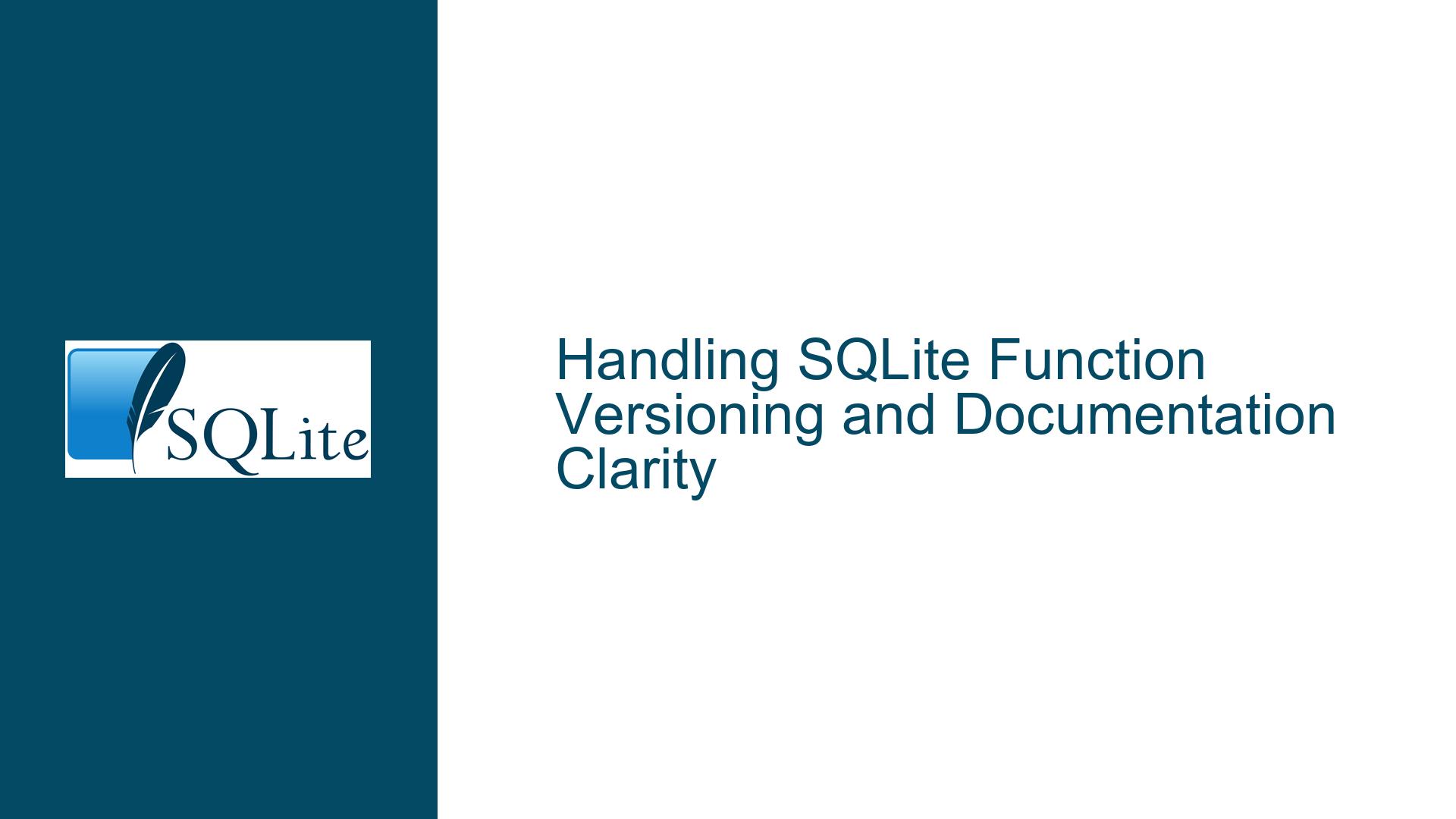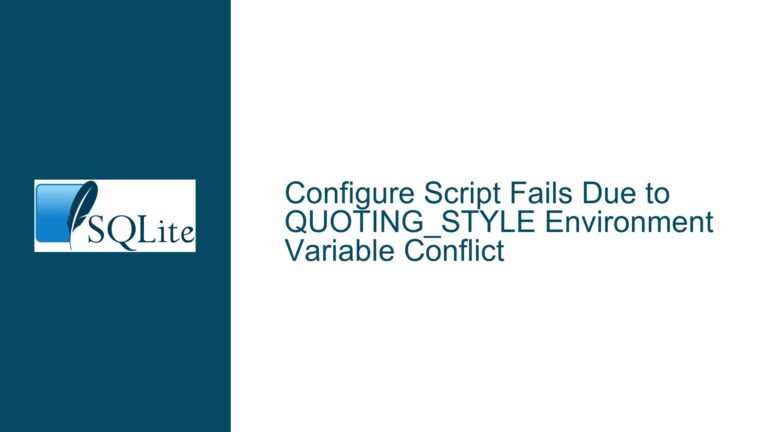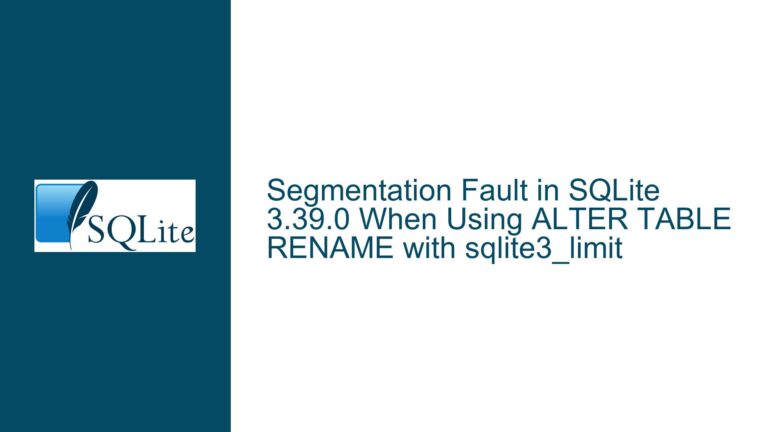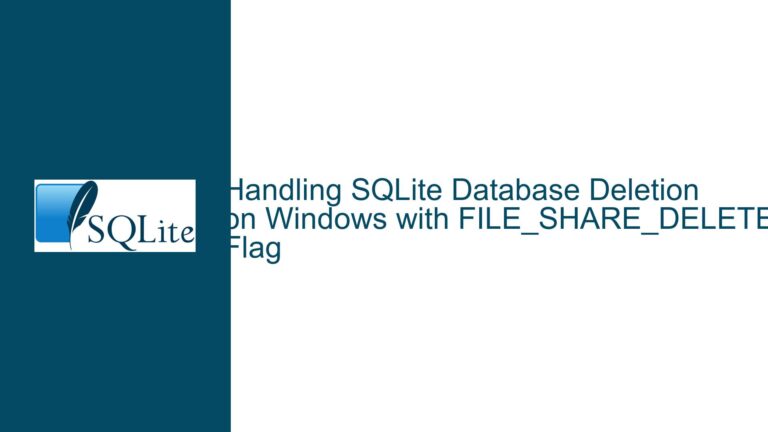Handling SQLite Function Versioning and Documentation Clarity
The Challenge of Version-Specific Function Availability in SQLite Documentation
SQLite, being a lightweight and widely-used database engine, continuously evolves with new features and functions. One such function, concat, was introduced in SQLite version 3.44.0. However, users running older versions of SQLite encountered errors when attempting to use this function, as it was not available in their installed versions. This issue highlights a broader challenge: how to effectively communicate version-specific information in SQLite’s documentation without compromising readability or maintainability.
The core of the problem lies in the balance between providing clear, concise documentation and ensuring that users are aware of the version requirements for specific functions. The current documentation does not consistently indicate when a function was introduced, leading to confusion for users who may not be running the latest version of SQLite. This issue is further complicated by the fact that SQLite is often embedded in applications, making it difficult for users to upgrade to the latest version without significant effort.
The Trade-Off Between Documentation Clarity and Version Information
The primary concern with adding version-specific information to SQLite’s documentation is the potential for clutter. SQLite’s documentation is known for its clarity and simplicity, and adding version numbers to every function or feature could detract from this. However, the absence of such information can lead to user frustration, as seen with the concat function. Users who are unaware of the version requirements may spend considerable time troubleshooting issues that could have been easily avoided with clearer documentation.
One proposed solution is to include a version annotation, such as @since, for each function or feature. This annotation would indicate the version in which the function was introduced, providing users with a quick reference point. While this approach would add some overhead to the documentation process, it would significantly improve the user experience by reducing confusion and troubleshooting time. Additionally, the use of hyperlinks to the relevant release notes could provide users with more detailed information without cluttering the main documentation.
Another consideration is the long-term maintenance of version annotations. SQLite has a large user base, and many users continue to run older versions of the database engine. As a result, version annotations would need to remain in the documentation indefinitely, rather than being removed after a certain period. This raises questions about the best way to present this information without overwhelming users. One potential solution is to use a table format, where functions are listed along with their introduction and deprecation versions, as well as their category (e.g., string operations, date functions, etc.). This approach would provide a clear and organized way to present version-specific information while maintaining the readability of the documentation.
Implementing a Version-Aware Documentation System
To address the challenges of version-specific documentation, SQLite could adopt a version-aware documentation system. This system would allow users to select the version of SQLite they are using and view the documentation relevant to that version. This approach would be similar to the documentation systems used by other databases, such as PostgreSQL, where users can select their version from a dropdown menu at the top of the documentation page.
Implementing a version-aware documentation system would require significant changes to the current documentation infrastructure. However, the benefits would be substantial. Users would no longer need to manually check whether a function is available in their version of SQLite, reducing the likelihood of errors and frustration. Additionally, this system would make it easier for users to find information about deprecated functions, as the documentation would automatically filter out functions that are not available in their selected version.
One potential implementation of this system would involve creating a separate documentation archive for each version of SQLite. These archives would be accessible from the downloads page, allowing users to easily download the documentation for their specific version. Alternatively, the main SQLite documentation page could include a dropdown menu that allows users to select their version and view the corresponding documentation. This approach would provide a more seamless user experience, as users would not need to leave the main documentation page to find the information they need.
In addition to a version-aware documentation system, SQLite could also consider adding visual indicators to the documentation to highlight version-specific information. For example, functions that were introduced in recent versions could be marked with an icon or color-coded text, making it easy for users to identify new features. Similarly, deprecated functions could be marked with a warning icon or red text, alerting users to potential issues. These visual indicators would provide an additional layer of clarity, helping users quickly identify the information they need without having to read through the entire documentation.
Conclusion
The issue of version-specific function availability in SQLite’s documentation is a complex one, requiring a careful balance between clarity and completeness. While adding version annotations to the documentation would improve the user experience, it is important to consider the potential impact on readability and maintainability. A version-aware documentation system, combined with visual indicators and a well-organized table format, could provide a comprehensive solution to this problem. By implementing these changes, SQLite can continue to provide clear and concise documentation while ensuring that users have the information they need to effectively use the database engine.
In conclusion, the challenge of version-specific documentation in SQLite is not insurmountable. With careful planning and thoughtful implementation, it is possible to create a documentation system that meets the needs of all users, regardless of the version they are using. By addressing this issue, SQLite can further enhance its reputation as a user-friendly and reliable database engine, ensuring that it remains a popular choice for developers and organizations around the world.






